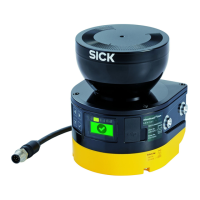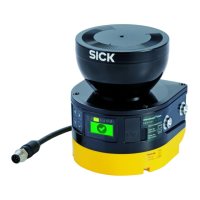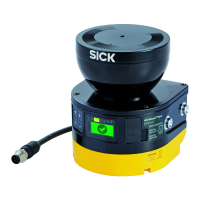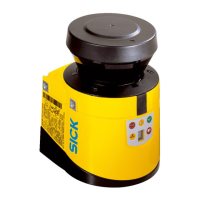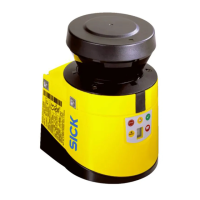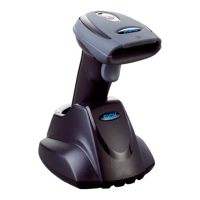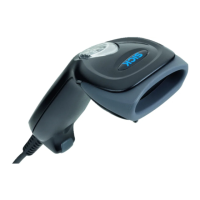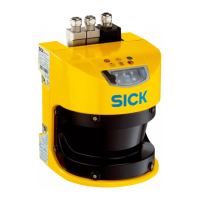Requirements for the electrical control of the machine
T
he OSSDs are short-circuit protected to 24 V DC and 0 V. When the protective field is
clear, the OSSDs signal the ON state with the HIGH signal level (non-isolated). If there
are objects in the protective field or there is a device fault, the OSSDs signal the OFF
state with the LOW signal level.
4.4.5 Control inputs
Overview
T
he safety laser scanner is equipped with control inputs:
•
The control inputs accept signals for switching between different monitoring cases.
•
Static control inputs are used for information about machine status.
•
Dynamic control inputs are usually used for information about the speed of a
vehicle.
The safety laser scanner can receive signals for monitoring case switching via the
network:
•
Depending on the assembly used, the monitoring case is switched in different
ways, see "Assemblies", page 75.
When switching between monitoring cases, bear in mind that a person may already be
in the protective field when switching takes place. So, you must make sure that the
monitoring case is switched at the right time. Only switching in time (namely before the
danger arises for the person at this location) ensures protection, see "Monitoring case
switching time", page 32.
Important information
DANGER
H
azard due to lack of effectiveness of the protective device
The dangerous state may not be stopped in the event of non-compliance.
The same safety level is required for the safety-related parts of the control which switch
the active protective field as for the safety function. In many cases, this is PL d as per
ISO 13849-1 or SIL2 as per IEC 62061.
•
Use the same earthing method for all devices that are electrically connected to the
safety laser scanner.
•
Voltage must be supplied in accordance with SELV/PELV (IEC 60204-1) for all
devices that are electrically connected to the safety laser scanner.
•
All devices connected to a local input or output of the safety laser scanner must
be in the same SELV/PELV circuit as the safety laser scanner.
Prerequisites
•
P
osition-dependent switching is carried out by 2 independently wired signal sour‐
ces, such as 2 independent position switches.
•
Speed-dependent switching is carried out by two independently wired signal sour‐
ces, such as two independent incremental encoders.
•
Manual switching that depends on the operating mode is carried out using a
suitable manual control switch.
Further topics
•
"D
ata sheet", page 178
•
"Electrical installation", page 90
•
"Inputs and outputs, local", page 131
4 P
ROJECT PLANNING
66
O P E R A T I N G I N S T R U C T I O N S | microScan3 Pro I/O 8025424/1ELL/2022-01-21 | SICK
Subject to change without notice
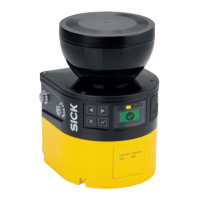
